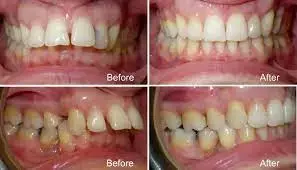- Home
- Medical news & Guidelines
- Anesthesiology
- Cardiology and CTVS
- Critical Care
- Dentistry
- Dermatology
- Diabetes and Endocrinology
- ENT
- Gastroenterology
- Medicine
- Nephrology
- Neurology
- Obstretics-Gynaecology
- Oncology
- Ophthalmology
- Orthopaedics
- Pediatrics-Neonatology
- Psychiatry
- Pulmonology
- Radiology
- Surgery
- Urology
- Laboratory Medicine
- Diet
- Nursing
- Paramedical
- Physiotherapy
- Health news
- Fact Check
- Bone Health Fact Check
- Brain Health Fact Check
- Cancer Related Fact Check
- Child Care Fact Check
- Dental and oral health fact check
- Diabetes and metabolic health fact check
- Diet and Nutrition Fact Check
- Eye and ENT Care Fact Check
- Fitness fact check
- Gut health fact check
- Heart health fact check
- Kidney health fact check
- Medical education fact check
- Men's health fact check
- Respiratory fact check
- Skin and hair care fact check
- Vaccine and Immunization fact check
- Women's health fact check
- AYUSH
- State News
- Andaman and Nicobar Islands
- Andhra Pradesh
- Arunachal Pradesh
- Assam
- Bihar
- Chandigarh
- Chattisgarh
- Dadra and Nagar Haveli
- Daman and Diu
- Delhi
- Goa
- Gujarat
- Haryana
- Himachal Pradesh
- Jammu & Kashmir
- Jharkhand
- Karnataka
- Kerala
- Ladakh
- Lakshadweep
- Madhya Pradesh
- Maharashtra
- Manipur
- Meghalaya
- Mizoram
- Nagaland
- Odisha
- Puducherry
- Punjab
- Rajasthan
- Sikkim
- Tamil Nadu
- Telangana
- Tripura
- Uttar Pradesh
- Uttrakhand
- West Bengal
- Medical Education
- Industry
Planned overbite reduction challenging in patients with extractions following treatment with Invisalign aligner appliances

Planned overbite reduction may be challenging in patients with extractions following treatment with Invisalign aligner appliances suggests a new study published in the Angle Orthodontist.
A study was done to determine whether achieved outcome regarding overjet and overbite matched the predicted outcome following treatment with Invisalign (Align Technology, San Jose, Calif) aligner appliances.
Data including pretreatment, predicted and achieved overjet, and overbite measurements provided by Align’s digital treatment facility, ClinCheck Pro, were evaluated. Descriptive statistics, Mann-Whitney U-test, and Wilcoxon rank-sum intraclass correlation (ICC) test results were calculated.
Results
From an initial sample of 600, 355 adult patients satisfied the inclusion and exclusion criteria. ICC scores for data input were excellent. Median (interquartile range [IQR]) age was 30.14 (23.33, 39.92) years and most (n = 259; 72.95%) were women. Almost one-third (n = 101; 28.45%) had undergone extraction as part of their treatment. More aligners were prescribed in the initial digital treatment plan for patients (median, 44; IQR: 35, 51.5; minimum, 17; maximum, 92) undergoing extractions as part of their orthodontic treatment than those who were not (median, 24; IQR: 18.25, 32; minimum, 13; maximum, 85) (P < .0001). Planned changes in overjet differed significantly from achieved outcomes (P < .001). Planned increases in overbite resulted in up to more than twice (222.72%) as much increase than predicted. Planned reduction of overbite achieved 8.69% of its predicted reduction in extraction cases.
Achieved overjet and overbite measurements differed significantly from the predicted outcomes at the end of an initial sequence of aligners. Planned increases in overbite resulted in greater overbite correction than predicted, particularly in extraction cases. Planned overbite reduction was challenging, especially in patients with extractions.
Reference:
Maurice J. Meade, Tony Weir; Predicted and achieved overjet and overbite measurements with the Invisalign appliance: a retrospective study. Angle Orthod 2023; doi: https://doi.org/10.2319/030923-161.1
Keywords:
Planned, overbite, reduction, challenging, patients, extractions, Maurice J. Meade, Tony Weir, Angle Orthodontist
Dr. Shravani Dali has completed her BDS from Pravara institute of medical sciences, loni. Following which she extensively worked in the healthcare sector for 2+ years. She has been actively involved in writing blogs in field of health and wellness. Currently she is pursuing her Masters of public health-health administration from Tata institute of social sciences. She can be contacted at editorial@medicaldialogues.in.
Dr Kamal Kant Kohli-MBBS, DTCD- a chest specialist with more than 30 years of practice and a flair for writing clinical articles, Dr Kamal Kant Kohli joined Medical Dialogues as a Chief Editor of Medical News. Besides writing articles, as an editor, he proofreads and verifies all the medical content published on Medical Dialogues including those coming from journals, studies,medical conferences,guidelines etc. Email: drkohli@medicaldialogues.in. Contact no. 011-43720751


